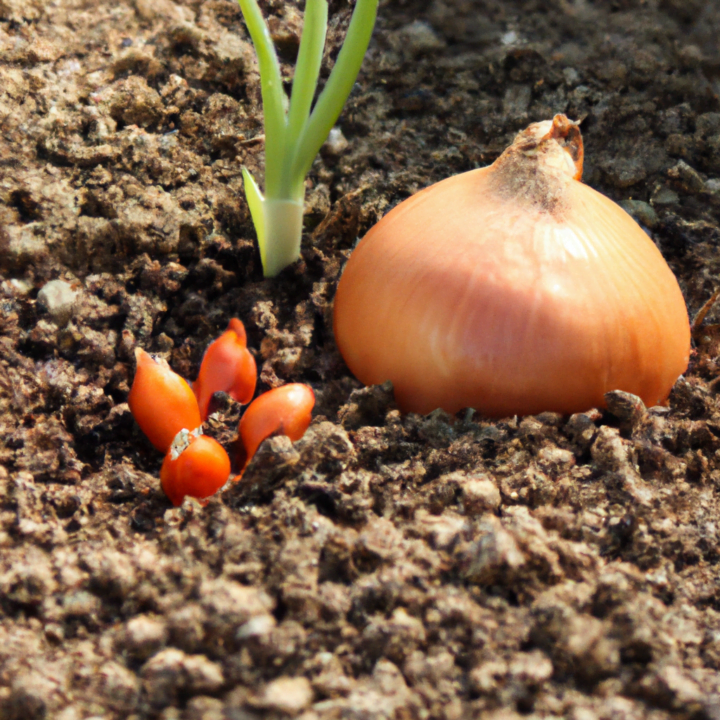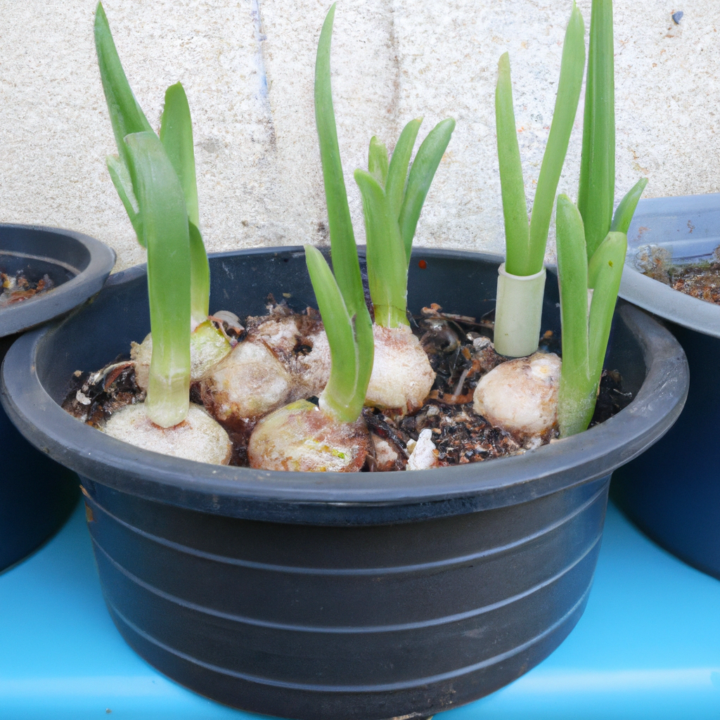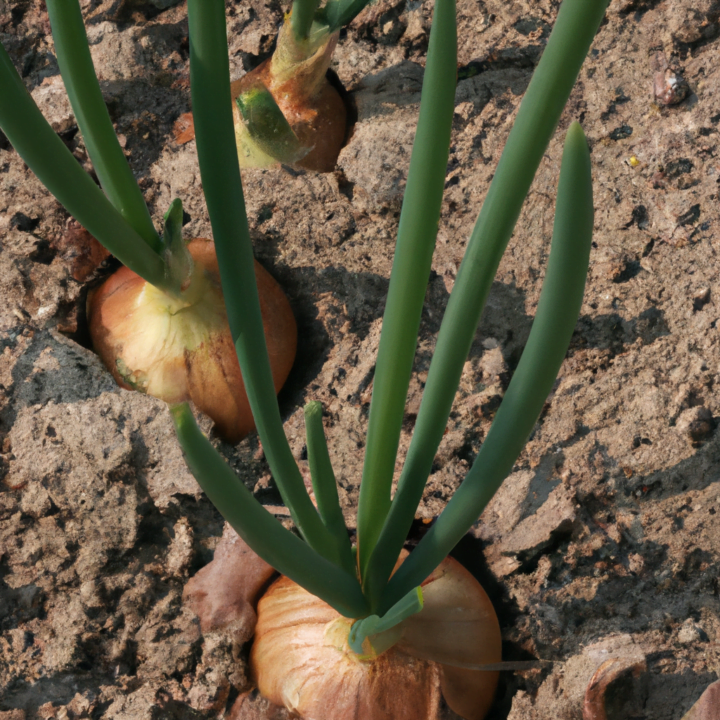What can I plant with onions – Top Tips

Have you ever wondered what can i plant with onions?
Are you an avid gardener looking to maximize the potential of your onion patch? Well, you’ve come to the right place!
Planting onions alongside certain companion plants can benefit both the onions and the other crops in your garden. In this article, we will explore the concept of companion planting with onions, the best companion plants for onions, as well as essential tips and tricks to ensure a successful onion harvest.
So, let’s get started.
Companion Planting with Onions
Table Of Contents
So you are wondering what can i plant with onions, don’t worry you are not alone. Let’s introduce you to Companion planting.
Companion planting is the practice of growing different plants in close proximity to enhance their growth, repel pests, attract beneficial insects, and improve overall garden health. When it comes to onions, there are several plants that make excellent companions.
What can I plant with onions – Onion Companion Plants
1. Carrots: Onions and carrots are a classic duo in the garden. They not only complement each other in flavor but also repel pests. Plant them together, and they will ward off carrot flies and onion maggots.
2. Cabbage Family: Members of the cabbage family, such as broccoli, kale, and cabbage, are excellent companions for onions. They help deter onion thrips and other pests that commonly attack onions.
3. Chamomile: The delicate and aromatic chamomile flowers not only attract beneficial insects but also enhance the flavor of onions. Plant them alongside your onions for a fragrant and beautiful garden bed.
4. Lettuce: Lettuce provides shade and conserves moisture for onions. Additionally, the two crops do not compete for space, making them ideal companions.
5. Tomatoes: Though they have different preferences for sunlight, onions and tomatoes still make great companions. Onions repel aphids and other insects that can damage tomatoes, while tomatoes deter onion maggots.
What Can I Plant With Onions – Checkout The FAQ
Best Time to Plant Onions
Onions are cool-season crops that thrive in temperatures between 55°F and 75°F (13°C to 24°C). The best time to plant onions depends on your location and climate zone.
In general, onions can be planted in early spring as soon as the soil can be worked. However, in warmer regions, fall planting may yield better results.
Consult your local extension service or gardening resources for specific recommendations based on your area.
Onion Sets for Planting
Onion sets, small bulbs that are grown the previous season, are a popular choice for planting onions. They provide a head start and ensure a more consistent crop.
When selecting onion sets, choose firm bulbs with no signs of disease or damage. Plant the sets with their pointed end facing up, burying them about an inch deep in well-drained soil.
Onion Spacing
Proper spacing is crucial for healthy onion growth. Space your onion sets or transplants according to their mature bulb size. Generally, larger onion varieties need more space.
On average, aim for 4 to 6 inches (10 to 15 cm) between plants and 12 to 18 inches (30 to 45 cm) between rows. Crowded onions may result in smaller bulbs and increased competition for nutrients.
Onion Sun Requirements
Onions thrive in full sun, requiring at least 6 to 8 hours of direct sunlight per day. Choose a sunny spot in your garden that receives ample light throughout the day. Lack of sunlight can lead to stunted growth and smaller bulb formation.
Onion Pests and Diseases
Onions can suffer from various pests and diseases. Common pests include onion maggots, onion thrips, and aphids.
To prevent infestations, use companion plants that repel these pests and consider implementing organic pest control methods such as neem oil or insecticidal soaps.
Diseases that can affect onions include onion white rot, downy mildew, and botrytis leaf blight. It’s essential to practice crop rotation, ensure proper soil drainage, and avoid overwatering to minimize the risk of disease. If necessary, consult with local gardening experts or extension services for specific management strategies.
Important Tips On Growing Big Onions
Onion Yield per Acre
When pondering what can i plant with onions you may wonder if the companion plants will increase the yield.
Onion yield per acre can vary depending on several factors, including cultivar, soil fertility, climate conditions, and cultivation practices. On average, a well-managed onion crop can yield around 8 to 10 tons per acre.
However, it’s crucial to note that yield can vary, and factors such as spacing, disease management, and fertilization play a significant role in achieving optimal yield. In conclusion, companion planting with onions is a fantastic way to enhance your garden’s biodiversity and improve the health of your onion crop.
As you learn more about companion gardening you will no longer be asking yourself what can I plant with onions.
By selecting the right companion plants, planting at the appropriate time, providing proper spacing and sunlight, and managing pests and diseases effectively, you’ll be well on your way to a bountiful harvest.
So, get your hands dirty, experiment with different companions, and enjoy the rewards of a thriving onion patch! Now that you have read our article we hope you have more knowledge on what can i plant with onions.
Checkout the video below for more information on what can i plant with onions and companion planting with onions.
We hope you liked our article :- What can I plant with onions – 11 Must Have Top Tips.
Frequently Asked Questions
1. What are some good companion plants for onions?
So you are wondering What can I plant with onions? Onions have several companion plants that can benefit their growth. Some good companion plants for onions include:
- Carrots
- Lettuce
- Cabbage
- Tomatoes
- Chamomile
2. Can I plant onions with carrots?
Yes, onions and carrots make excellent companion plants. They both thrive when planted together, as onions can help repel carrot flies while carrots can deter onion flies.
3. What is the best time to plant onions?
The best time to plant onions is in early spring, as soon as the soil can be worked. Onions prefer cooler temperatures for their initial growth.
4. How much space should I leave between onion plants?
Onion plants should be spaced approximately 4-6 inches apart in rows. This allows enough space for the bulbs to develop without overcrowding.
5. What are the sun requirements for onions?
Onions require full sun for optimal growth. They should be planted in an area that receives at least 6-8 hours of direct sunlight per day.
6. What are some common pests and diseases that affect onions?
Onions can be susceptible to various pests and diseases. Some common pests include onion thrips, onion maggots, and onion flies. Diseases such as white rot and downy mildew can also impact onion plants.
7. How many onions can I expect to yield per acre?
The onion yield per acre can vary depending on several factors including growing conditions, onion variety, and cultivation practices. On average, a properly managed onion crop can yield around 15,000 to 30,000 pounds per acre.
8. Can I plant onions from sets?
Yes, planting onions from sets is a popular method. Onion sets are small, dormant bulbs that can be directly planted in the garden. They provide a quicker and easier way to grow onions compared to starting from seeds.
9. Are there any plants that should not be planted with onions?
Yes, there are some plants that should be avoided when planting onions. Examples include peas, beans, and asparagus, as they may inhibit the growth of onions.
10. Is there a companion planting chart available for onions?
Yes, a companion planting chart for onions can be helpful in determining which plants work well together. It provides information on compatible and incompatible plants for onions.
11. What are the benefits of companion planting with onions?
Companion planting with onions can offer several benefits such as pest control, increased pollination, weed suppression, and improved overall garden health and productivity.

